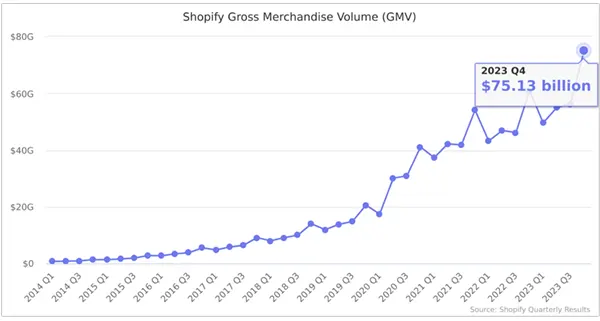10 Proven Strategies to Increase Sales on Your Shopify Store

So, you’ve just launched your own Shopify store.
You’ve put your heart and soul into creating the best store and placing the best products with stunning imagery up for sale.
And now you’re waiting to see all your hard work bear fruit and start making sales.
There is one tiny issue here, there is no one is visiting your store.
So, what exactly can you do to even start getting sales on your Shopify store?
In this blog post, we will see how you can give a kickstart to your Shopify store and increase your sales with some tips and strategies that many Shopify pros use to rake in huge profits every month.
Additionally, we’ll provide a comprehensive guide to adding products to Shopify with ZIK Analytics, a powerful tool for optimizing your product selection and maximizing your store’s potential.
And if doing things manually confuses you, you can also use professional Shopify development services to take your store to the next level.
10 Strategies to Boost Your Shopify Store’s Sales
If you want to start getting sales from the moment your store is launched, these strategies can be of help to you:
Optimize Your Website Design
We all know just how important first impressions are.
This is especially the case for websites that are trying to establish their brand image online.
Your website’s design is the first impression customers will have of your brand.
You need to make sure that it’s visually appealing, easy to navigate, and mobile-friendly.
A well-designed website instills trust and encourages visitors to explore products.
With Shopify, you can create intuitive and engaging website designs that speak to users impressively.
Add High-Resolution Product Images
Hey, as an e-commerce store, how your products are displayed is just as important as your website design.
If your product images are not transparent or professional enough, they may appear amateurish to your visitors.
It is important to use high-quality images that describe the merchandise visually with the highest clarity.
Since customers won’t be able to physically see or touch your products, make sure that they feel like they have them in their hands.
Include videos, images with a 360-degree view, and AR integration to elevate the shopper’s buying experience.
DID YOU KNOW?
One way to break the sales slump is to identify the right audience because if the SEO practices are misleading searchers or your paid strategy is going after the wrong demographics, you will be driving traffic but not sales.
Write Compelling Product Descriptions
A catchy and descriptive product description should compel anyone to make a purchase.
You need to create product descriptions that will not only list the features but also highlight the benefits and solutions that your brand offers.
Use compelling language combined with immersive storytelling to engage users and address their pain points.
Customers should be able to understand how the merchandise simplifies their problems.
Include Customer Ratings and Reviews
In the e-commerce scene, ratings and reviews can be a real dealbreaker.
While good reviews will help your store build trust and credibility, any negative ratings can bring to question the authenticity of your services as well as impact your brand image.
This is why, while you aim to deliver an optimal customer experience, you need to encourage satisfied users to leave reviews and prominently display them on product pages.
If there are any negative reviews, do not hide or delete them. Instead, make sure you get on top of and fix any issues that the customers with negative reviews had with your products.
Reduce Cart Abandonment Rate
As per the conclusion of 48 shopping cart abandonment studies conducted by Baymard Institute, the average cart abandonment rate is 69.99%.
Many people abandon products in their carts, which means losing many users in an instant. At the same time, you can persuade and bring those customers up for sale.
With the right Shopify e-commerce development strategy, that would be a piece of cake!
- Streamline the checkout process for simple utility.
- Allow guest checkout options so users can check out without having to sign up or register.
- Send push notifications and follow-up emails to customers who have left items in their cart, reminding them to complete their purchases. Customize these emails to include discounts or incentives.
- Use exit-intent popups to capture the attention of users who are about to leave the website without making a purchase. These pop-ups can offer discounts, free shipping, or other incentives to encourage them to stay and complete their order.
- Transparent and customer-friendly return and refund policies can reduce hesitations about purchasing. Make sure these policies are easily accessible.
- Shopify provides data and analytics tools that allow us to track cart abandonment rates and identify trends and specific reasons why users abandon their carts. This information helps you make informed adjustments to your shop.
Take a look at the graph below that shows the gross merchandise volume of Shopify globally. It is attracting more store owners, which makes it stand in the same league as the big e-commerce brands like Amazon and Wixstore.

The gross merchandising volume of Shopify in the first quarter of 2023 was $75.12 billion, which was up by 23% year-over-year from $60.96 billion. From $197.22 billion in 2022, it increased by 20% to $235.91 billion in 2023.
Make Your Store SEO-Friendly
Organic website traffic is one of the primary ways that you’ll get any sales in the first place.
This is why you need to optimize your website for search engines to increase your organic traffic.
Use relevant keywords, create valuable content, and ensure the site loads quickly.
Higher visibility in search results can lead to more visitors and, in turn, more sales.
To do so
- Optimize the page titles and meta descriptions.
- Choose a relevant domain name.
- Invest in quality content to build authority and credibility.
- Optimize site speed and responsiveness.
Invest in Social Media Marketing
The power of social media for marketing purposes knows no bounds.
Today, everyone you know is online, and if you market your product just the right way, the number of sales you get now can easily increase by a thousandfold.
So, share engaging content, run targeted ads, and collaborate with influencers to reach a broader audience and drive traffic to your shop.
You can seek help from a Shopify development company and integrate social media handles with the shop.
Just make sure that the targeted audience can make purchases seamlessly as they consume content on social networking sites such as Instagram, Pinterest, Facebook, Snapchat, LinkedIn, etc.
Email Marketing for Customer Engagement
Build and segment the email list to send personalized offers and updates to your subscribers.
Email marketing remains one of the most effective ways to nurture leads and convert them into consumers.
Make use of email templates, custom-create one from scratch, or make new ones from old ones as suitable for the audience.
In any case, it is a great way to keep existing and new users engaged.
Try giving loyal customers a treat in the form of discounts, offers, rewards, or early access to deals, all through an email.
A/B Testing Before Launch
Conduct A/B tests to optimize the website elements, such as headlines, call-to-action buttons, and merchandise placement.
Thoroughly test the online shop for security, speed, responsiveness, and performance before launch.
Not just that, but watch for any mishaps and security vulnerabilities so the users have the best experience at all times.
You can also avail of Shopify store development services to aid various customization, and maintenance operations.
Leverage Analytics for Store Optimization
Continuously monitor your website’s performance using Shopify’s built-in analytics tools.
Leveraging analytics for store optimization is a powerful way to increase sales.
- Set up Google Analytics to track user behavior, conversions, and other basic metrics. This will provide valuable insights into how visitors interact with the site.
- Identify the best-performing commodities and push them for promotion to spike up deals.
- Analyze user behavior data to understand how visitors navigate the site, where they drop off, and which pages have the highest bounce rates. Identify bottlenecks in the user journey and make improvements to increase conversion rates.
- Monitor the performance of marketing campaigns by tracking traffic sources, click-through rates, and conversion rates. Allocate the budget to the most effective campaigns and channels.
- Use analytics to assess the effectiveness of the product recommendation engine. Implement personalized merchandise recommendations on your site to increase cross-selling and upselling opportunities.
- Consider implementing predictive analytics to forecast future selling trends and customer behaviors. This can help proactively tailor marketing and inventory plans.

As of April 2024, Shopify had a market share of 10.32% in e-commerce platforms, with 29% of the US market. Shopify owns 23 percent of the top 1 million websites and 19 percent of the top 100,000 sites. It is the largest e-commerce platform in the US, with 25% of US websites using e-commerce technologies.
Conclusion
In the progressive world of e-commerce, increasing profits on your Shopify store requires a dynamic approach, a keen understanding of the audience, and a commitment to continuous improvement.
The 10 proven strategies we’ve explored in this Shopify Checklist for new store provides a solid foundation for achieving this goal.
By optimizing the website, engaging with users, and leveraging data-driven insights, you can not only boost earnings but also build a loyal customer base.
Remember that success in e-commerce is an ongoing journey, and staying attuned to market trends, consumer preferences, and emerging technologies will keep the online shop at the forefront of the industry.
So, roll up your sleeves, embrace these tactics, and watch the sales soar to new heights.








